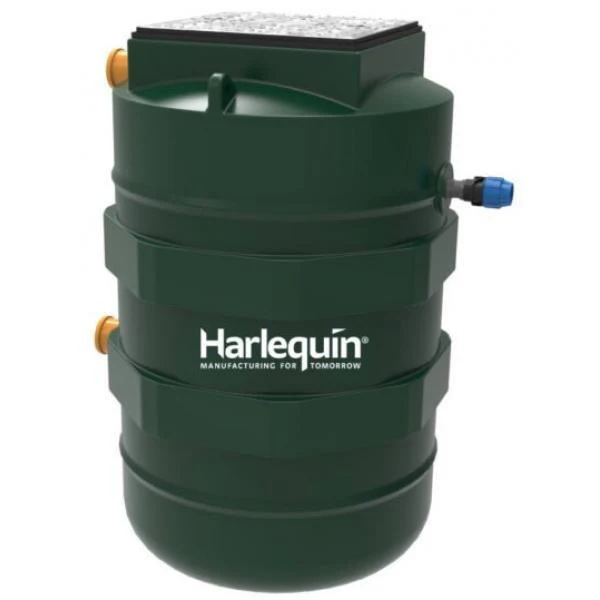Harlequin
Harlequin 1100 Litre Sewage Twin Pump Station
Harlequin 1100 Litre Sewage Twin Pump Station
Prices are EX VAT unless stated otherwise
Couldn't load pickup availability
The Harlequin 1100 Litre Effluent Twin Pump Station is suitable for pumping sewage from a property to either a mains sewer connection, sewage treatment plant or septic tank. Harlequin pump chambers are manufactured from rotationally moulded polyethene making them stronger and easier to handle than some of the GRP alternatives.
This pump chamber is supplied with twin pumps, benefits of the Harlequin twin pump system are:
- High-level alarm supplied as standard
- Alternating twin pumps which allow the station to continue operating in the event of a single pump failure
- Control panel to manage the pump operation and warn of a pump failure
1100 Litre pump chambers provide 24-hrs storage for up to 7 people in a domestic installation.
Estimated Lead Time
1 - 2 weeks
![]() Pump Station Installation Guide
Pump Station Installation Guide
![]() 1100 Litre Pump Station Specification
1100 Litre Pump Station Specification
![]() 1100 Litre Pump Station Drawing
1100 Litre Pump Station Drawing
![]() Harlequin Pump Station Brochure
Harlequin Pump Station Brochure
Specifications:
| Model: | 1100PSV2 |
| Capacity (litres): | 1100 |
| Invert Depth (mm): | 1095 |
| Outlet Depth (mm): | 440 |
| Overall Depth (mm): | 1645 |
| Diameter (mm): | 1000 |
| Outlet Connection (mm): | 63 |
| Inlet Diameter (mm): | 110 |
| Cover Dimensions (mm): | 600 x 600 |
| Cover Duty: | Pedestrian |
| Pump: | DAB -Stainless Steel |
| Pump Voltage: | 220-240V 50Hz |
| Weight (kg): | 82 |
Benefits of the Harlequin Sewage Pump Station
- Durable & Stable Product – Made from tough durable polyethylene, it is easy to transport and has a wide base for stability.
- Easy to install – Simple yet effective pipework makes it extremely easy to install.
- Saves Money – With an easy installation due to the systems compact size and lightweight, it also promotes low maintenance reducing costs.
- Compact System – A perfect compact solution providing 24-hour pump & storage capabilities for domestic applications.
When do you need a pump station?
- When the cost of groundworks to allow sewage to flow by gravity outweighs the cost of a sewage pumping station.
- When the sewer line passes over a ridge.
- If basement floors are too low to allow sewage flow by gravity.
- Where gravity system has not been built.
What is a sewage pumping station and how does it work?
A pumping station is made up of a large tank, known as a wet well, that acts as the receiver for sewage from a building or a group of buildings. Sewage from individual houses flows into the wet well.
The sewage will then sit in the well until it reaches a predetermined level. Once it reaches this level, a pump will kick in to pressurise the sewage so that it will travel out of the wet well, uphill, to a point where it enters the main sewer, or that it can then travel into the main sewer using gravity.
Advantages of a Sewage Pump Station
- A pump station offers convenience when installing a sewage system, and has the potential of cutting construction costs.
- Pump stations are fitted with remote monitoring systems, which keep operators updated.
- Sewage is pumped automatically without any human contact, which eliminates the risk of health problems.
- Different sizes of pumps are available for domestic applications and commercial applications.
- The intake of the pumps is often wide to prevent blocking.
- Sewage pumping systems are fitted with alarms to alert you to problems with the system. This minimises the risk of sewage overflowing as you are alerted quickly.
What Is A Grinder Pump?
Waste from water-using household appliances (toilets, bathrooms, washing machines etc.) flows through the home’s pipes into the grinder pump’s holding tank. Once the wastewater inside the tank reaches a specific level, the pump will turn on, grind the waste into a fine slurry, and pump it on to its next destination.
Share


